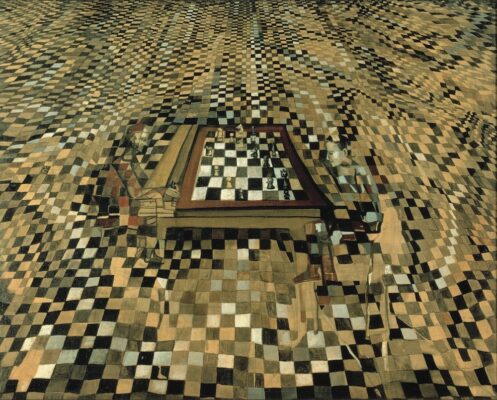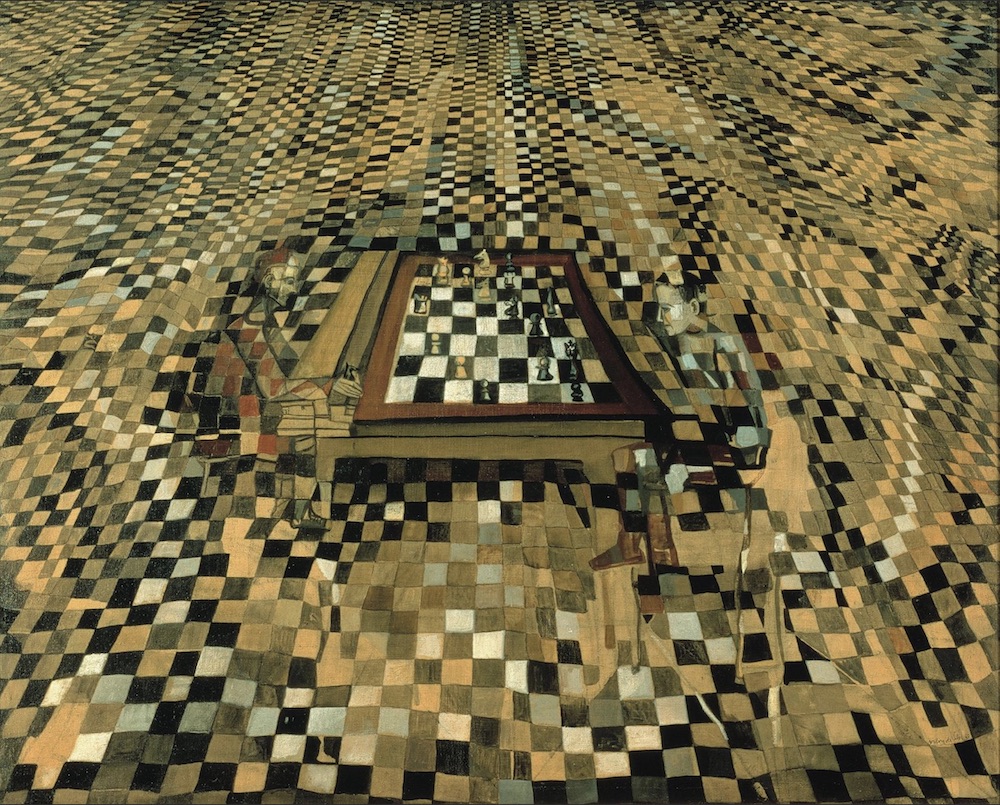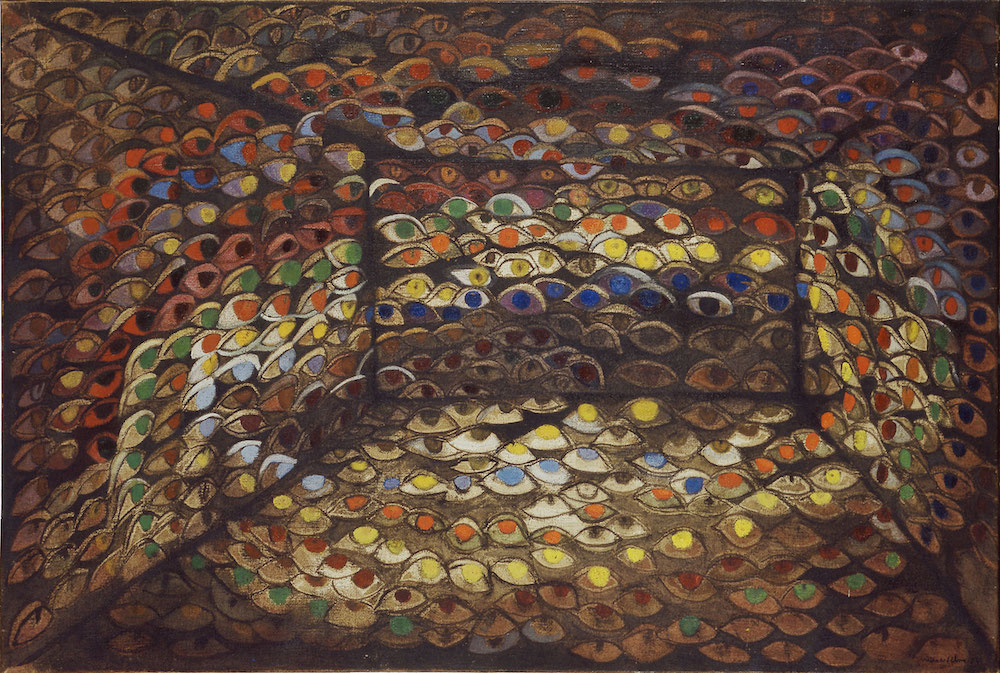Search
To search for an exact match, type the word or phrase you want in quotation marks.
A*DESK has been offering since 2002 contents about criticism and contemporary art. A*DESK has become consolidated thanks to all those who have believed in the project, all those who have followed us, debating, participating and collaborating. Many people have collaborated with A*DESK, and continue to do so. Their efforts, knowledge and belief in the project are what make it grow internationally. At A*DESK we have also generated work for over one hundred professionals in culture, from small collaborations with reviews and classes, to more prolonged and intense collaborations.
At A*DESK we believe in the need for free and universal access to culture and knowledge. We want to carry on being independent, remaining open to more ideas and opinions. If you believe in A*DESK, we need your backing to be able to continue. You can now participate in the project by supporting it. You can choose how much you want to contribute to the project.
You can decide how much you want to bring to the project.

The exhibition L’ oeil du labyrinthe by the Portuguese artist Maria Helena Vieira da Silva is perhaps just as its title says: like placing an eye on a labyrinth.
Due to its intricate architecture, the Dijon Museum of Fine Arts offers us an irregular tour of the two exhibition spaces, a vast retrospective located on the second floor, plus another minor one focused on her personal life on the ground floor, both reflecting, as her work, a disorder where vertigo is the only sure thing.
The variety of da Silva’s work in this exhibition extends from its beginnings in the 1930s, presented with a kind of kaleidoscopic figuration, deconstructing spaces, altering perspectives, and rendering them organic, up to her most abstract work in the 1980s.
Thanks to the donation of the Kathleen and Pierre Granville Fund, the museum owns one of the largest collections of the artist’s work, and it is for this reason that, in commemoration of the 30th anniversary of her death, they dedicate this double exhibition to her career and to her relationship with the collectors who were her friends and patrons in life.
On the upper floor, focused on her most analytical work, are omnipresent diagrams, folded into a kaleidoscopic aesthetic as if it were a kind of Borgesian riddle, that aid in the search for the Minotaur in his labyrinth.
Influenced by cubism, futurism and constructivism, the artist developed a language in which parallel and diagonal lines are a basic tool for the creation of optical vibrations, as can be seen in her stained glass windows in the Saint-Jacques de Reims church. Thus, despite the fact that some of her works are classified as architectural, the elimination of figurative references and the compositional complexity, added to a reduced color palette in many cases, result in an ornamentation of a living space.
Painting is thus presented as a stage where architectural utopias can be created without the limitations of media or perception, and the architectural work becomes an aesthetic space in her work that offers a certain sublime, immeasurable, palpable character.
These uninhabitable places, combined with a great admiration for the visual framework of modern cities, make linearity and connectivity characters in her architectural portraits in which geometry becomes a radical resource.
Her most abstract work is made up of perpendicular lines that vary from monochrome to the highest contrasts, its architectural form unrecognizable except for a few contours. Thus, her architectural work is mainly a visual-mathematical exercise.

“La partie d’échecs” 1943, Centro Pompidou
In her most figurative paintings, however, the conflict with a vanishing point is what relates Vieira da Silva’s work to the labyrinth. From a vertiginous perspective, the work isn’t projected towards infinity but instead has a very marked limit: the background is a figure in itself, a full stop, a culmination point and not a point of convergence.
In this way, her images function as a stage, where the vanishing point remains but the space acquires a chaotic, quasi-monstrous organicity, with limits between characters and surroundings erased.
We can see the architectural importance in her paintings by recognizing how the background articulates the figures in a kind of kaleidoscopic repetition. Its geometry is a relationship between figures (rhombuses, trapezoids, faces that act as minimal units) and the characters that merge together. In this sense, this kind of repetitive figure generates a type of optical vibration that balances their lack of life and actions.
The board itself resists in an unplayable game, the fourth wall is inverted and we are now watched by these mysterious characters that hide in the shadows. Vertigo increases and we have nowhere to hold on to. There is only one limit in this infinite space, and what we see looks back at us and thanks to this we don’t fall in.
Viewing Maria Helena Vieira da Silva’s work that covers different aspects of abstraction makes it clear that it is not the size of the work that creates quality. On the contrary, her smaller and more introspective works stand out from the rest due to their composition, dynamism and metaphorical meaning.

“Deux Femmes à l’ombrelle” de Pablo Picasso
In turn, unlike the narratives imposed on the women artists of her time, her paintings seem very earthy, without a strongly marked metaphysical aspiration or an esoteric search, instead engaging in an experimentation between the dream game, abstraction, aesthetics and the literary fable.
For the purposes of exploring these structures, the repetition of patterns with a clearly marked perspective, as mentioned, loses the true horizon in pursuit of visual homogeneity. The expansive delineation raises certain visual associations with the work of Picasso.
What is interesting here is the development that arises between these two points so far removed in her career, that is, a graphic language that she uses in certain works in which her abstract style converges in a sort of symbolic expressionism and in which traces of figuration can still be seen.

“L’Incendie II ou le Feu” (El incendio II o el fuego)
In works like L’Incendie II ou le Feu, where wavy lines are present, the use of contrasts is important to place the observer once again in the painting but without falling into it.
The articulation of the pictorial plane in diagonals combined with a flatness of perspective, alongside the depth given by the treatment of color, creates a somewhat medieval image. It could be said that the treatment of dynamism afforded by the line and the range of reds, browns and ocher, strategically arranged in certain points on the pictorial plane, schematically refer us to works by Bosch.

“La Scala ou les yeux”
We find ourselves in an oblique, intricate terrain where we flee from the comfort of shadows. The space observes us (as in La Scala ou les yeux) and that’s when we realize that the monster is the labyrinth and we are its prey.
L’oeil du labyrinthe is at the Dijon Museum of Fine Arts until April 3, 2023.
Free admission from 9:30 a.m. to 6:00 p.m. every day except Tuesday.

Gonzalo Pech [Argentina] is an unstructured text characterized by a narrative that is at times excessively analytical. His work, which transmutes between the philosophy of art and advertising since his adolescence, is full of irreverence and contradiction. Curator and photographer by training, he has preferred to frame his practice in what he calls Blessure D’art, amalgamating its nihilistic yet platonic nature
"A desk is a dangerous place from which to watch the world" (John Le Carré)